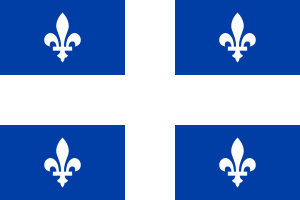Government of Quebec
The Government of Quebec (French: Gouvernement du Québec) refers to the provincial government of the province of Quebec. Its powers and structure are set out in the Constitution Act, 1867.
| Formation | 1867 |
|---|---|
| Country | Canada |
| Website | gouv.qc.ca |
| Legislative branch | |
| Legislature | National Assembly |
| Meeting place | Parliament Building |
| Executive branch | |
| Main body | Executive Council |
| Head of Government | Premier |
| Viceregal Representative | Lieutenant Governor |
| Judicial branch | |
| Court | Superior Court |
In modern Canadian use, the term "government" refers broadly to the cabinet of the day, elected by the National Assembly of Quebec and the non-political staff within each provincial department or agency – that is, the civil and public services.
The province of Quebec, like all Canadian provinces, is governed by a unicameral legislature, the National Assembly of Quebec, which operates in the Westminster system of government. The political party that wins the largest number of seats in the legislature normally forms the government, and the party's leader becomes premier of the province, i.e., the head of the government.
Lieutenant Governor of Quebec
The functions of the sovereign, Elizabeth II, Queen of Canada, and known in Quebec as the Queen in Right of Quebec, are exercised by the Lieutenant Governor of Quebec. The Lieutenant Governor is appointed by the Governor General of Canada on the recommendation of the Prime Minister of Canada, in consultation with the Premier of Quebec.
Executive powers
The executive powers in the province are vested in the monarch and are exercised by the Premier of Quebec and the Cabinet, who are responsible to the National Assembly of Quebec, advising the lieutenant governor on how to exercise the Royal Prerogative and other executive powers.
